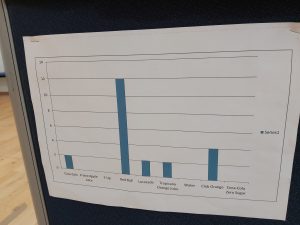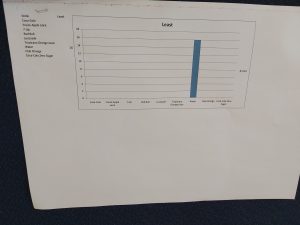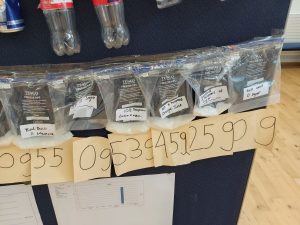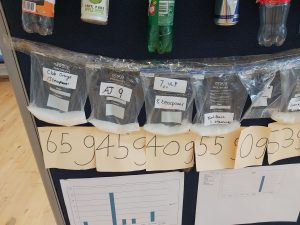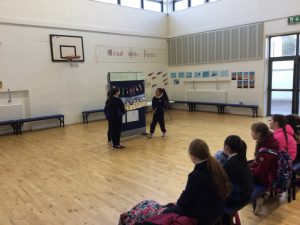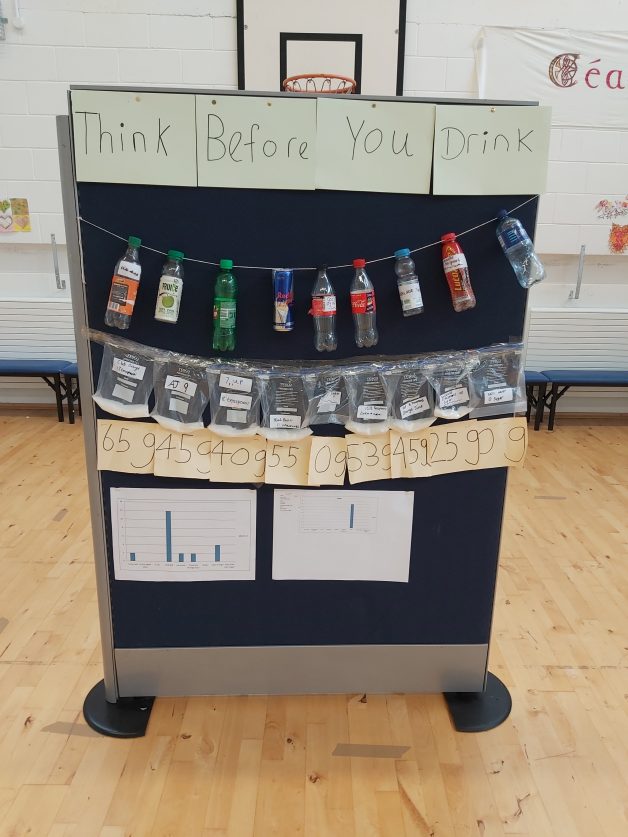The objective of our experiment was to estimate and measure the quantity of sugar in popular soft drinks sold in Ireland. Our focus was to encourage healthy eating and drinking habits in our school, and to highlight the high levels of sugar and hidden sugars in soft drinks. This lesson integrated mathematics, science, SPHE and literacy.
Each group had to identify and investigate how many grams of sugar were in each soft drink, and to display their results on a bar chart, covering the strand of data. We began by estimating how many teaspoons of sugar were in each drink via a class survey. Once we had our estimates, we then read the labels of each drink to see how much sugar was in each bottle per 100ml. We converted each teaspoon (5 grams) into total grams of sugar per 100ml. Each group measured out the quantity of sugar in each drink using a 5g measuring spoon and a bag of sugar. They presented this by putting the sugar into clear bags. We then compared their estimates with the measured quantity, and displayed the data results for both using a bar chart.
We then created a survey, where each group went to a class and asked a series of questions about their knowledge of sugar levels in drinks, and to present their results on a bar chart. Each group brought the soft drinks to children in 3rd, 4th, 5th and 6th classes, and asked them 4 questions: 1. Which drink did they think had the most sugar? 2. Which drink did they think had the least sugar? 3. To put them in order from which drink they thought had the highest to the lowest sugar? 4. How many teaspoons of sugar in each drink? They demonstrated what a teaspoon of sugar looked like, and recorded the results.
Once each group had conducted their survey we represented the results on a bar chart. We then collated all the data from the classes and displayed the results. One group was selected to present the results to both the classes and the parents who were invited in to see the presentation.
Well done Mr. Donoghue and class for such valuable information. We will definitely be changing our drinking habits.
